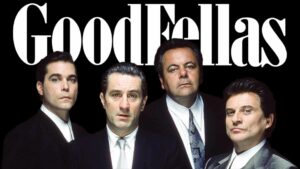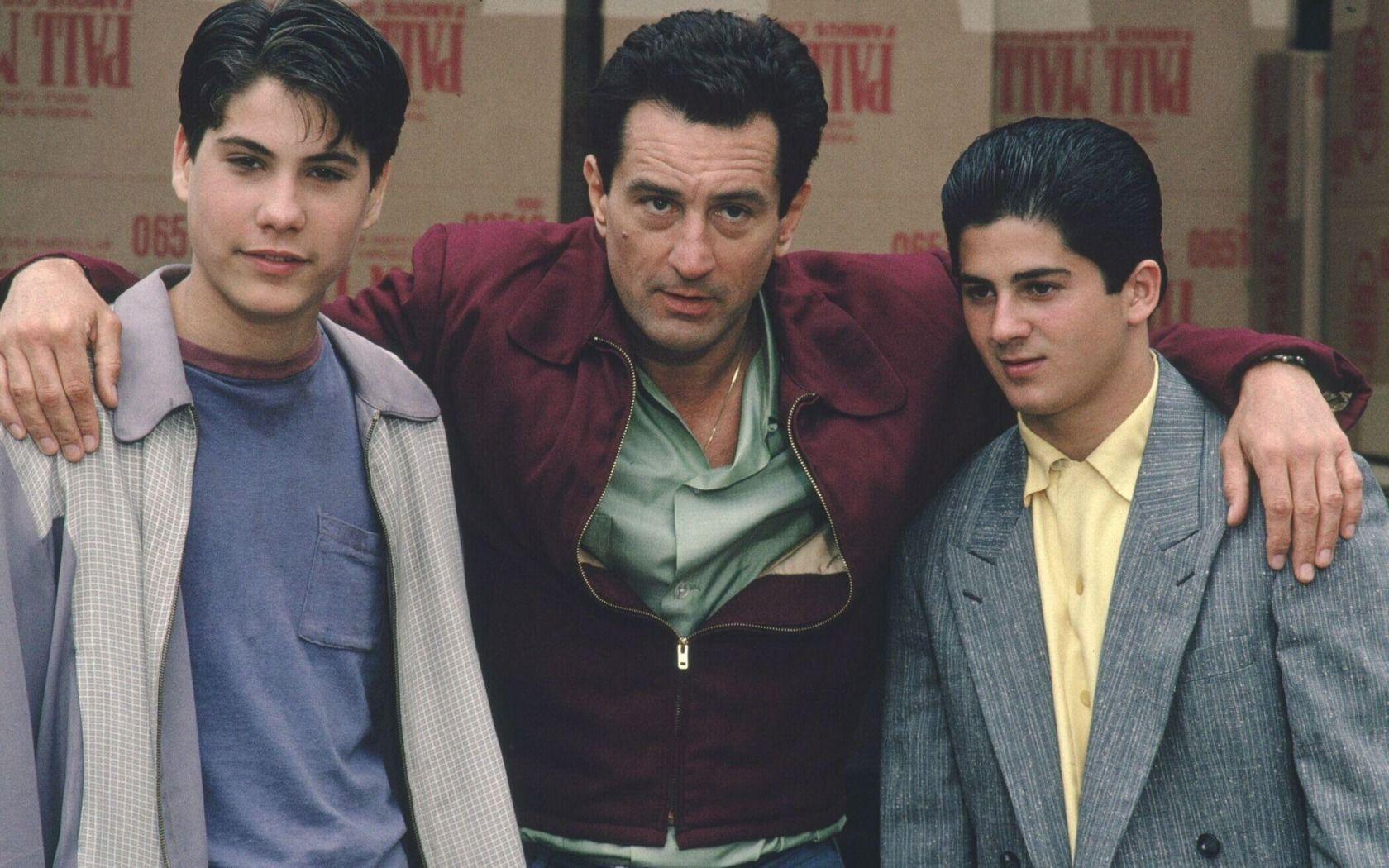15 Interesting Facts :-
Based on True Events: The film is based on the true story of Henry Hill, a former mobster who turned informant. Henry Hill’s life in the mafia is chronicled in the book “Wiseguy” by Nicholas Pileggi, who also co-wrote the screenplay with Martin Scorsese.
Real Life Characters: Many characters in the movie are based on real-life mobsters. For example, Henry Hill is portrayed by Ray Liotta, Jimmy Conway is based on James Burke, and Tommy DeVito is based on Thomas DeSimone.
Scorsese’s Cameo: Martin Scorsese, the director of the film, makes a cameo appearance as a customer at the Copacabana nightclub. This famous tracking shot through the club was done in one take.
Pesci’s Improvisation: Joe Pesci, who played the volatile Tommy DeVito, improvised many of his lines, including the famous “Funny how?” scene, which was based on a real-life experience Pesci had.
Frequent Collaborators: “Goodfellas” marks the seventh collaboration between Martin Scorsese and Robert De Niro.
Long Take: The scene where Henry takes Karen on a date through the Copacabana club was shot in one continuous take. This was achieved by removing the front of the club, allowing the camera to follow the characters seamlessly.
Acclaim: “Goodfellas” received widespread critical acclaim and was nominated for six Academy Awards, including Best Picture and Best Director. Joe Pesci won the Oscar for Best Supporting Actor for his role as Tommy DeVito.
Real Henry Hill: Henry Hill himself has a cameo in the film. He plays a small role as a man who tries to sell guns to Jimmy Conway.
Narration: Ray Liotta’s character, Henry Hill, narrates much of the film. This narration adds depth to the story and provides insights into Henry’s thoughts and motivations.
Soundtrack: The film’s soundtrack features an eclectic mix of music from the 1950s and 1960s, including songs by The Rolling Stones, Cream, and Donovan. The music helps to set the tone for the various scenes and enhances the overall atmosphere of the film.
Brutal Violence: “Goodfellas” is known for its realistic and brutal portrayal of violence. The famous “Baptism of Blood” scene, where multiple characters are violently killed, is a particularly memorable example of this.
Cultural Impact: “Goodfellas” has had a significant cultural impact and has been referenced and parodied in various forms of media since its release.
Historical Accuracy: While the film is based on true events, some liberties were taken with the storytelling for dramatic effect. However, it is generally regarded as one of the most accurate portrayals of organized crime in cinema.
Legacy: “Goodfellas” is often cited as one of the greatest films ever made and is considered a masterpiece of American cinema. It has influenced numerous filmmakers and remains highly influential to this day.
Henry Hill’s Death: Henry Hill, the real-life inspiration for the film, passed away in 2012 at the age of 69. Despite his criminal past, he became a well-known figure in popular culture due to his association with “Goodfellas” and his subsequent interviews and appearances.

Released Date: September 19, 1990 (United States)
Genre: Crime, Drama
Detail Plot: The film follows the rise and fall of Henry Hill, a young man who becomes involved in the Italian-American mafia. It explores his life within the mob, his relationships with fellow mobsters, his eventual descent into drug addiction, and his decision to become an informant for the FBI.
Cast: Robert De Niro as James “Jimmy” Conway, Ray Liotta as Henry Hill, Joe Pesci as Tommy DeVito, Lorraine Bracco as Karen Hill, Paul Sorvino as Paul Cicero
Crew: Directed by Martin Scorsese, Written by Nicholas Pileggi and Martin Scorsese
Public Rating: IMDb: 8.7/10, Rotten Tomatoes: 96% (Tomatometer), 93% (Audience Score)
Reviews: “Goodfellas” received widespread critical acclaim upon its release, with praise for its direction, performances, and authenticity in depicting the mafia lifestyle.
Trivia: The film is based on the book “Wiseguy” by Nicholas Pileggi, which recounts the real-life experiences of Henry Hill. Joe Pesci’s famous “Funny how?” scene was improvised, based on a similar incident that happened to him. Martin Scorsese’s mother appears in the film as Tommy DeVito’s mother.
Notable Quotes:
“As far back as I can remember, I always wanted to be a gangster.” – Henry Hill
“Funny how? What do you mean, funny? Funny how?” – Tommy DeVito
“Never rat on your friends and always keep your mouth shut.” – Jimmy Conway
Budget and Box Office Collection: Budget: $25 million, Box Office: $46.8 million
Awards, Nominations, or Achievements:
Academy Awards: Won Best Supporting Actor (Joe Pesci), Nominated for Best Picture, Best Director, Best Adapted Screenplay, Best Film Editing, and Best Supporting Actress (Lorraine Bracco)
Golden Globe Awards: Nominated for Best Picture – Drama, Best Director, Best Supporting Actor (Joe Pesci)
BAFTA Awards: Nominated for Best Film, Best Director, and Best Adapted Screenplay
Numerous other awards and nominations from various film critics’ associations and festivals.
Behind the scenes stories.
In the vast landscape of cinema, certain films etch themselves into the annals of history not just for their compelling narratives but also for the gripping tales that unfolded behind the camera. Martin Scorsese’s masterpiece, “Goodfellas,” is one such cinematic gem that continues to captivate audiences decades after its release. From production challenges to behind-the-scenes anecdotes, the making of “Goodfellas” is as intriguing as the mob-driven saga it portrays.
A Visionary Director’s Ambition
Before delving into the intricate web of behind-the-scenes stories, it’s essential to understand the visionary force driving the film’s creation. Martin Scorsese, renowned for his gritty portrayal of urban life and complex characters, helmed “Goodfellas” with an unwavering commitment to authenticity. Drawing inspiration from Nicholas Pileggi’s book “Wiseguy,” Scorsese aimed to craft a portrayal of the mob world that was raw, unapologetic, and undeniably real.
Production Challenges: Bringing the Mafia to Life
Bringing Pileggi’s riveting tale to the silver screen wasn’t without its hurdles. One of the most notable challenges was navigating the intricate hierarchy and culture of the mafia. Scorsese and his team embarked on extensive research, consulting with former mobsters and law enforcement officials to ensure the film’s authenticity.
Additionally, capturing the essence of different time periods proved to be a meticulous task. From the glamorous excesses of the 1970s to the gritty realism of the 1980s, the production design meticulously recreated each era, immersing audiences in the ever-evolving landscape of organized crime.
Accidents and Adversities: The Unpredictable Nature of Filmmaking
Despite meticulous planning, accidents and adversities are an inevitable part of filmmaking. One notable incident occurred during the filming of the infamous “funny how” scene, where Joe Pesci’s character, Tommy DeVito, confronts Henry Hill (played by Ray Liotta) in a tense exchange. Pesci’s improvisational skills led to a moment of genuine tension when he unexpectedly broke character, prompting a genuine reaction from Liotta and the rest of the cast.
Another instance of unpredictability arose during the filming of the Copacabana tracking shot, a now-iconic sequence that follows Henry and his date, Karen, as they navigate through the bustling nightclub. Scorsese initially planned for a straightforward shot but improvised on the day of filming, opting for a more dynamic and immersive approach. The result was a breathtaking sequence that required meticulous coordination and timing.
Notable Anecdotes: From Cast Camaraderie to Iconic Performances
Behind the scenes of “Goodfellas,” camaraderie among the cast and crew flourished, infusing the production with a sense of shared purpose and passion. Joe Pesci’s electrifying portrayal of Tommy DeVito earned him widespread acclaim, with his improvisational skills adding layers of authenticity to the character. Meanwhile, Ray Liotta’s nuanced performance as Henry Hill captured the character’s journey from wide-eyed recruit to jaded insider with remarkable depth.
One particularly memorable anecdote involves the casting of Robert De Niro as Jimmy Conway. De Niro, known for his method acting approach, immersed himself in the role, spending time with real-life mob figures to capture the essence of Conway’s character. His dedication to authenticity permeates every frame of his performance, elevating the film to cinematic greatness.

